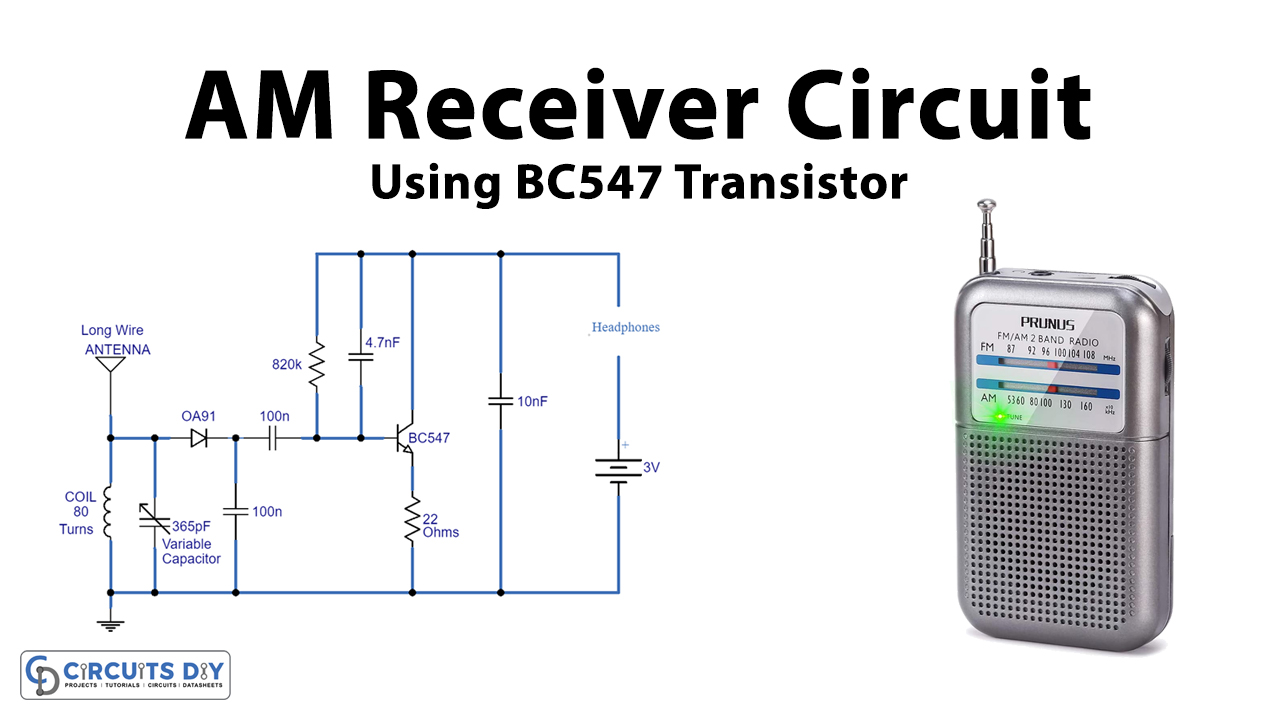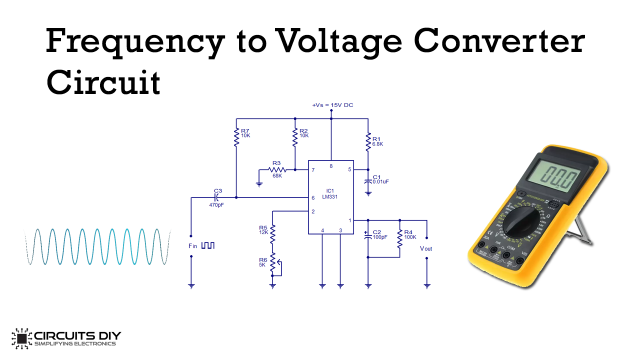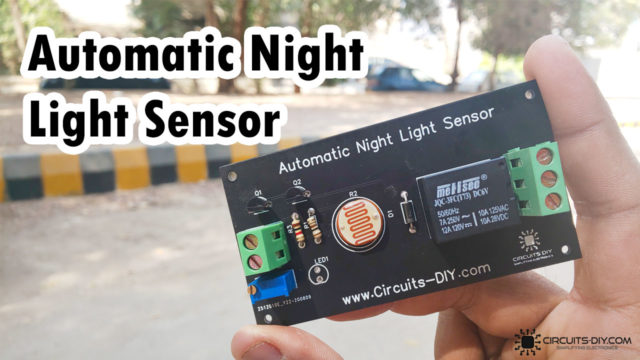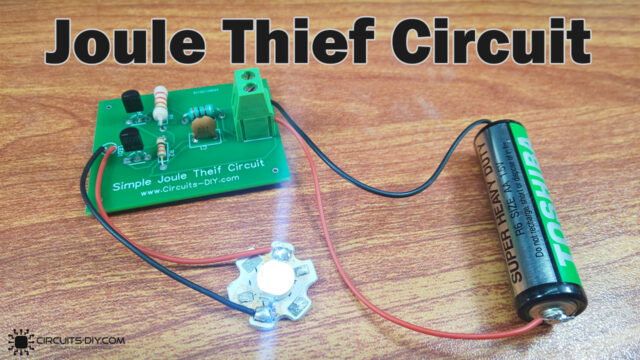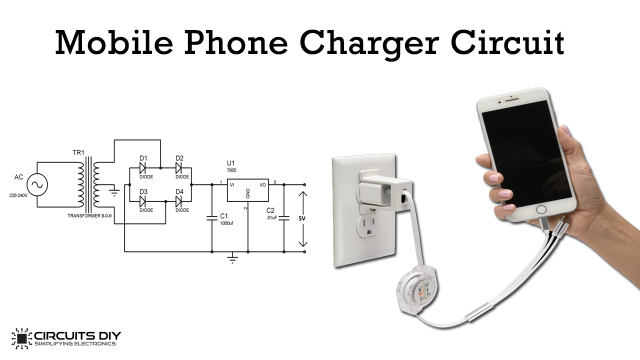Amplitude modulation (AM) is a modulation strategy, utilize in the latest electronic communication. In amplitude modulation, the amplitude of the carrier wave changes to that of the transmitting message signal.
The circuit fabricates with the help of the BC547 transistor. The transistor BC547 utilizes as a signal amplifier in this circuit. Moreover, a diode 0A91 identifies the input sound signal and then sends this signal to the transistor to amplify. Few other electronic parts utilize in this project, like headphones, antenna, a bunch of capacitors and resistors, and so forth
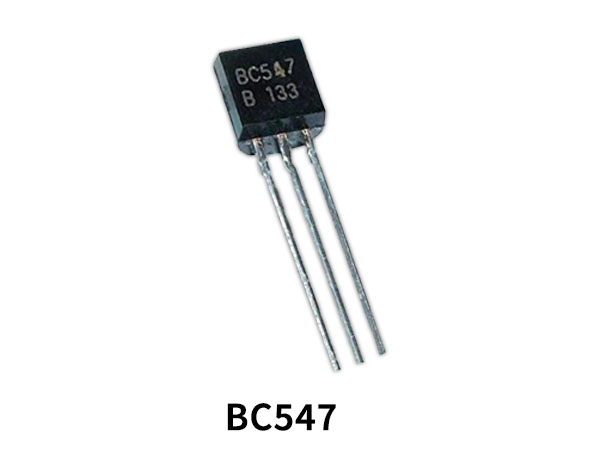
Hardware Components
The following components are required to make AM Receiver Circuit
| S.no | Components | Value | Qty |
|---|---|---|---|
| 1. | Transistor | BC547 | 1 |
| 2. | Antenna | – | 1 |
| 3. | Coil | 80 turns | 1 |
| 4. | Variable Capacitor | 365pF | 1 |
| 5. | Diode | OA91 | 1 |
| 6. | Resistor | 820K, 22Ω | 1, 1 |
| 7. | Capacitor | 100nF, 10nF, 4.7nF | 2, 1, 1 |
| 8. | Headphones | – | 1 |
| 9. | Battery | 3 volts | 1 |
BC547 Pinout

For a detailed description of pinout, dimension features, and specifications download the datasheet of BC547
AM Receiver Circuit
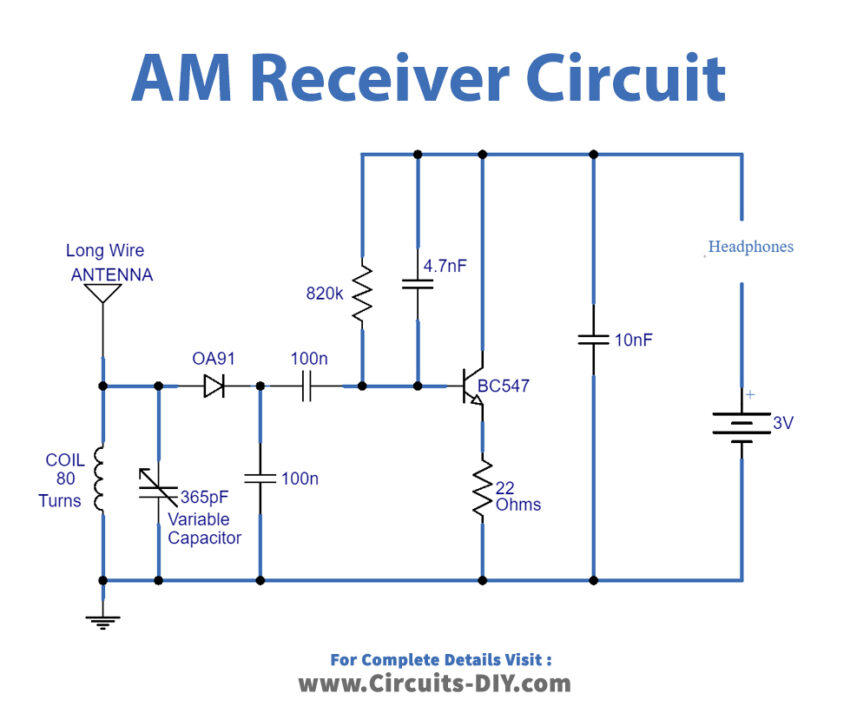
Working Explanation
The schematic that appeared above is a basic AM receiver circuit that utilizes just a single transistor and some different segments. The 80 turns inductor and 365pF variable capacitor structure a loop circuit. It gets the signals through the antenna which is a receiving wire. And afterward, the signal identifies by the OA91 diode and amplify by the BC547 transistor. Inductor coil is equivalent to 80 turns of 26 s.w.g enameled copper wire twisted on a toilet paper roll.
There are two stages of AM receiver which are RF and IF (filtering and amplification). RF-to-IF receivers incorporate an oscillator with a variable frequency (differs from RF carrier frequency). By tuning to the channel, you are tuning the nearby oscillator and RF tune-able channel at the equivalent time. All stations have set a fixed carrier frequency for sufficient selectivity.
For the modulator to work with any radio signal, we convert the carrier frequency of any radio signal to Intermediate Frequency (IF).
The radio receiver uses to optimize for that frequency. A radio receiver comprises a Radio Frequency (RF) area, an RF-to-IF converter (mixer), an Intermediate Frequency (IF) area, a Demodulator, and an Audio speaker.
Applications and Uses
- An AM receiver detects amplitude fluctuations in the radio waves at a specific frequency.
- Receives and transmits sound signals


